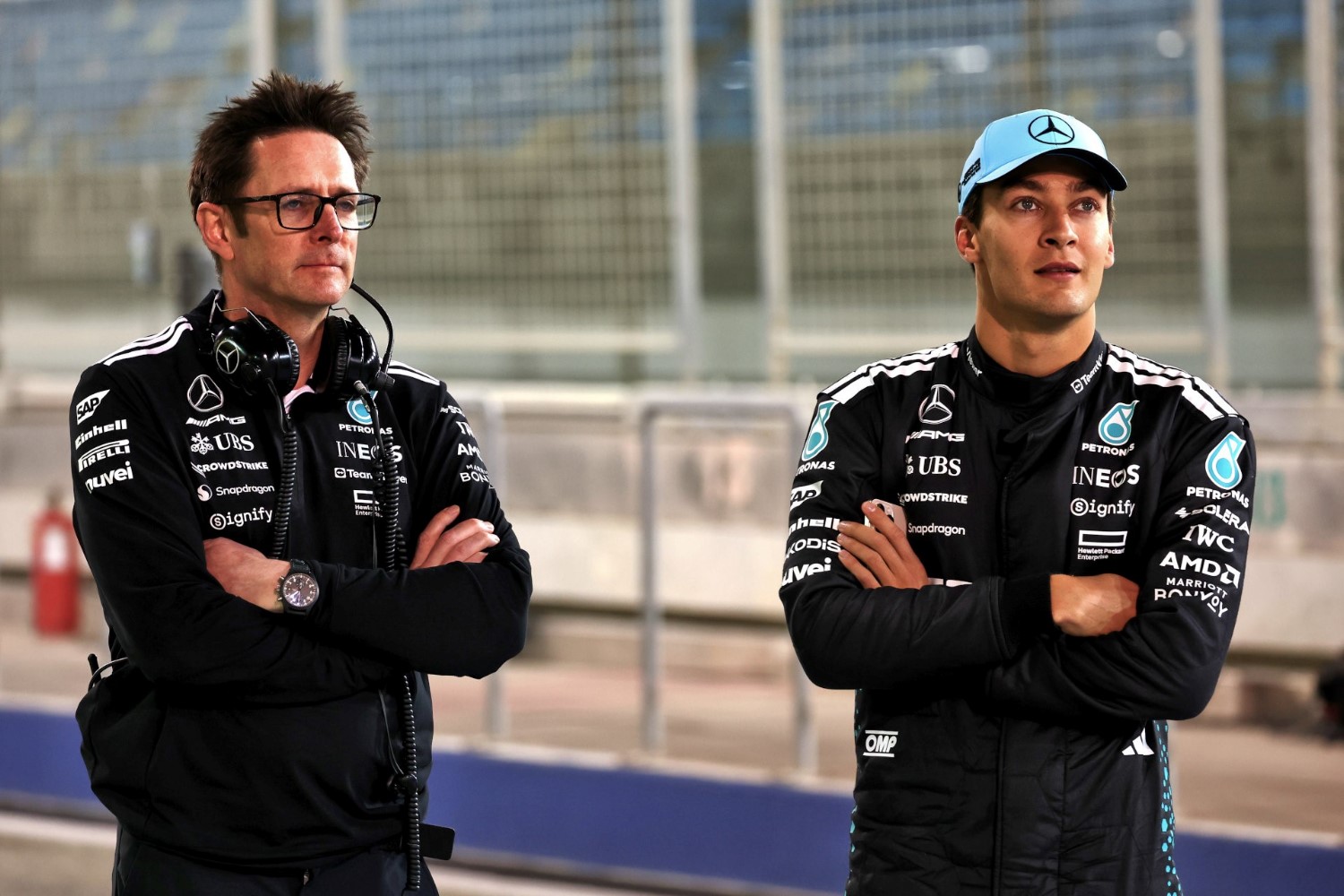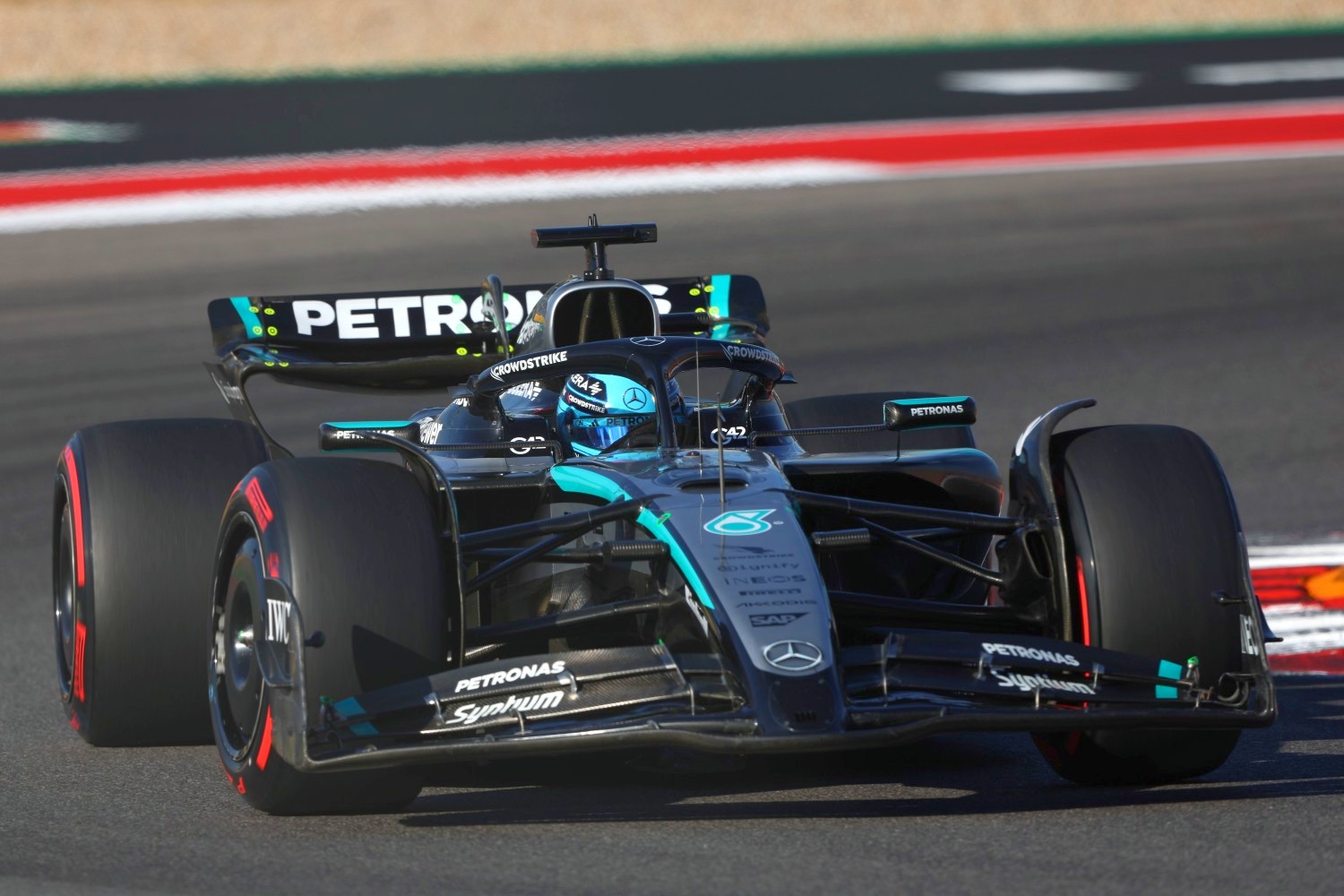Formula 1 News: While many drivers made passes, Russell cries because he couldn’t
(GMM) George Russell (pictured) says Formula 1’s current era has become increasingly predictable – with track position and tire management leaving little room for racing beyond the first corner.
The Mercedes driver, who finished sixth in Austin after starting fourth, said Sunday’s United States GP typified the problem.
“Even before the race, I had the feeling that wherever you positioned yourself after the first corner, that’s where you’d end up – and unfortunately, that’s exactly what happened,” Russell said.
“Right now, qualifying and the first corner decide the race. There’s no tire degradation. There’s only three-tenths of a second between the fastest and slowest cars in the top six, and you normally need at least half a second to make an overtake.
“So if I had finished the first corner in P3, I would have been on the podium, but instead I finished P6 – and that’s how I finished. I don’t even remember the last two-stop race in F1.”
Editor’s Note: The FIA shortened the DRS zone at many circuits last year, and as a result, it has made passing more difficult.
Russell said the lack of strategy variation is sapping life from the racing. “Formula 1 right now is Q3 and a race to Turn 1,” he said.

The Briton pointed to Pirelli’s durable compounds as a key factor. “Realistically, you need tires that allow you to push hard, but that wear out after 15 laps, so you have to make two or three pitstops in a race,” he explained.
“Ideally, soft tires should last 12 laps, mediums 15, and hards 20 before suddenly losing performance. But that’s easier said than done. Pirelli has it tough either way – if the tires wear too much, people complain that drivers can’t push. If they don’t wear, the racing’s boring.”
Editor’s Note: Tires such as what Russell is suggesting would result in the track being littered with twice as many tire marbles.
McLaren’s Lando Norris, who fought throughout the race to pass Charles Leclerc for second place in Austin, agreed that overtaking has become almost impossible.

“I really struggled to get past Charles,” Norris said, admitting he isn’t sure if the sweeping regulation changes for 2026 will change the situation.
“I have no idea how it’s going to work next year with all the new battery and energy stuff. I’m sure it’ll be a lot better just because there’s less downforce and less grip.
“The cars won’t look anywhere near as cool through Sector 1 – they’ll be slower in the corners, but quicker in the straights for a few seconds. So I think the racing will probably be a bit better next year.”
Fernando Alonso also expects improvement when the new regulations arrive in 2026, but warned fans not to expect miracles.
“A regulation change always aims to make racing more fun and increase overtaking,” the Aston Martin driver said. “Sometimes it works, other times it doesn’t.
“But if there are more overtakes, it will be because of energy management, not the size of the car. Let’s hope it’s more fun for the fans.”
Editor’s Note: The FIA should have returned the DRS zones to their original length. They ruined the passing.
